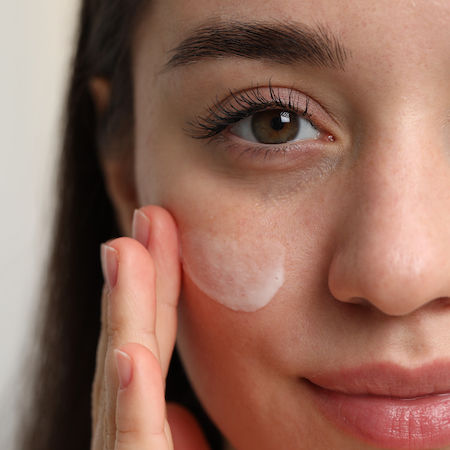Feb. 4, 2018 (Kelowna, BC) – The World Health Organization and a European SCHEER Report mispresented the quality of the research used and omitted relevant confounding information in the groups’ most recent publications on sunbeds, according to research reports published this month in the journal Anticancer Research.
“We are deeply concerned that these assessments appear to be based on an incomplete, unbalanced and non-critical evaluation of the literature,” the authors wrote in the lead study, Reichrath et al, 2018. “The stance taken by both agencies is not sufficiently supported by the data and in particular, current scientific knowledge does not support the conclusion that sunbed use increases melanoma risk.”
The Reichrath et al study is authored by an international team of researchers from the dermatology, epidemiology, endocrinology and vitamin D research fields in Canada, the United States and Europe.
The authors criticized the WHO for failing to acknowledge weaknesses in the data and for being unbalanced. “While these reports were purportedly based on the best available scientific evidence, we are deeply concerned about their scientific quality and obvious lack of objectivity, most likely owing to an infusion with the laudable zeal to combat alarming increases in skin cancer. Both publications show an implicit tendency toward an unbalanced view and must be criticized because of many scientific misinterpretations and shortcomings. The main conclusions are not sufficiently supported by the data presented nor by our scientific knowledge.”
Specifically, the authors state that WHO and SCHEER Report:
- Failed to mention that the quality of the data used by WHO and SCHEER in their reports was acknowledged by contributing authors to be poor or weak and incapable of isolating the effects of sunburn from non-burning exposure.
- Ignored epidemiological and animal studies that show no increase in melanoma following both chronic and sub-burning UV exposure.
- Ignored research demonstrating beneficial effects of UV exposure.
- Ignored scientifically established consequences of vitamin D deficiency.
Selective omission or suppression of relevant confounding information in an academic report is considered academic fraud by most research institutions. The authors stopped short of using that term in their paper but were clear that WHO and SCHEER appear to have selectively removed material that would have affected their conclusions.
A second paper published this month in the same journal (Burgard et al 2018) critically evaluated and summarized 31 sunbed research studies and determined that the quality of the studies was poor and did not meet scientific standards to establish a causative link between sunbeds and melanoma risk, based on criteria established by the Oxford Centre for Evidence-based Medicine. The WHO did not acknowledge these weaknesses.
“In summary, our review has highlighted the poor quality of the evidence available at present on this topic. We conclude that (i) results of our and previously published meta-analyses most likely overestimated the association of melanoma risk with solarium use, (ii) both the level of evidence and grade of recommendation of studies published previously investigating the association of melanoma risk with solarium use are weak, and therefore (iii) present scientific knowledge does not support the hypothesis of an increased melanoma risk due to solarium use, and questions studies that try to attribute melanoma cases to indoor tanning, and does not support initiatives that aim to ban responsible/moderate solarium use for tanning purposes,” the authors wrote.
The Joint Canadian Tanning Association (JCTA) and its members have for decades stated that the research used by the WHO is of poor quality, that it has not been adjusted for confounders such as outdoor sun exposure, sunburning, skin Type 1 (always burns, never tans), and that the data included non-commercial, more-intense sunbeds used by doctors in medical practices to treat skin disease – which skewed the data.
The JCTA is calling on WHO officials to meet with the Canadian sunbed industry to discuss this issue before WHO or any of its affiliated groups publish any further statements on this topic.
The Reichrath paper makes the case for this re-evaluation clear. “In conclusion, both the SCHEER and WHO reports claim to assess health effects of sunbed use. Unfortunately, however, as such they are partially unbalanced and inaccurate. Both documents mainly assess negative health effects of UV exposure, conceal the large body of evidence demonstrating beneficial health effects of UV radiation, and major conclusions drawn are not sufficiently supported by current scientific knowledge. It should be emphasized that the main conclusions drawn by the SCHEER and WHO reports are not in accordance with generally accepted principles of evidence-based medicine, they not only are not in line with recommendations of the Oxford Centre for Evidence-based Medicine, but, as outlined in this critical appraisal, also do not fulfill the criteria proposed by Bradford Hill for examining causality in a biological system (strength of association, consistency, specificity, temporality, biological gradient, plausibility, coherence, experiment and analogy). Other researchers added the ruling out of confounding factors and bias. With this unscientific approach, both the SCHEER and WHO reports are not adequate and do not properly summarize current knowledge on comparing beneficial and adverse effects of UV exposure from sunbeds.” (Reichrath et al, 2018)
JCTA believes research on sunbed use should be segmented and reported based on the skin type of the subjects and whether or not the sunbed was in a professional tanning facility. JCTA member salons follow professional standards to make sure clients are protected from overexposure and that clients that are a Skin Type 1 (always burn, never tan) are not allowed to use a sunbed. For further information about responsible tanning please go to the JCTA consumer website www.TanResponsibly.ca.
About the Joint Canadian Tanning Association (JCTA):
The JCTA represents sunbed facilities, suppliers and manufacturers serving the Canadian sunbed community. JCTA has cooperated with governments in Canada to create standards for tanning facilities, and JCTA members adhere to professional standards, including staff certification training to ensure that operators properly control, sanitize and maintain sunbed equipment and that clients are correctly tanned according to their skin type.
For further information: JCTA Executive Director Steven Gilroy is available for interviews. By phone: 1.800.915.0367, By Email: info@TanCanada.org
Journal References:
- Burgard et al. Solarium Use and Risk for Malignant Melanoma: Meta-analysis and Evidence-based Medicine Systematic Review. Anticancer Research, 2018 DOI: 10.21873/anticanres.12339
- Reichrath et al. A Critical Appraisal of the Recent Reports on Sunbeds from the European Commission's Scientific Committee on Health, Environmental and Emerging Risks and from the Word Health Organization. Anticancer Research, 2018 DOI: 10.21873/anticanres.12330



